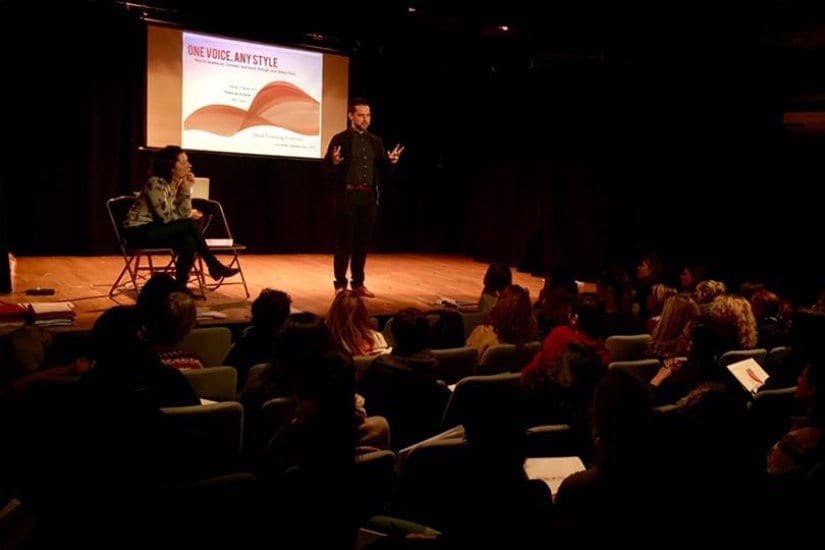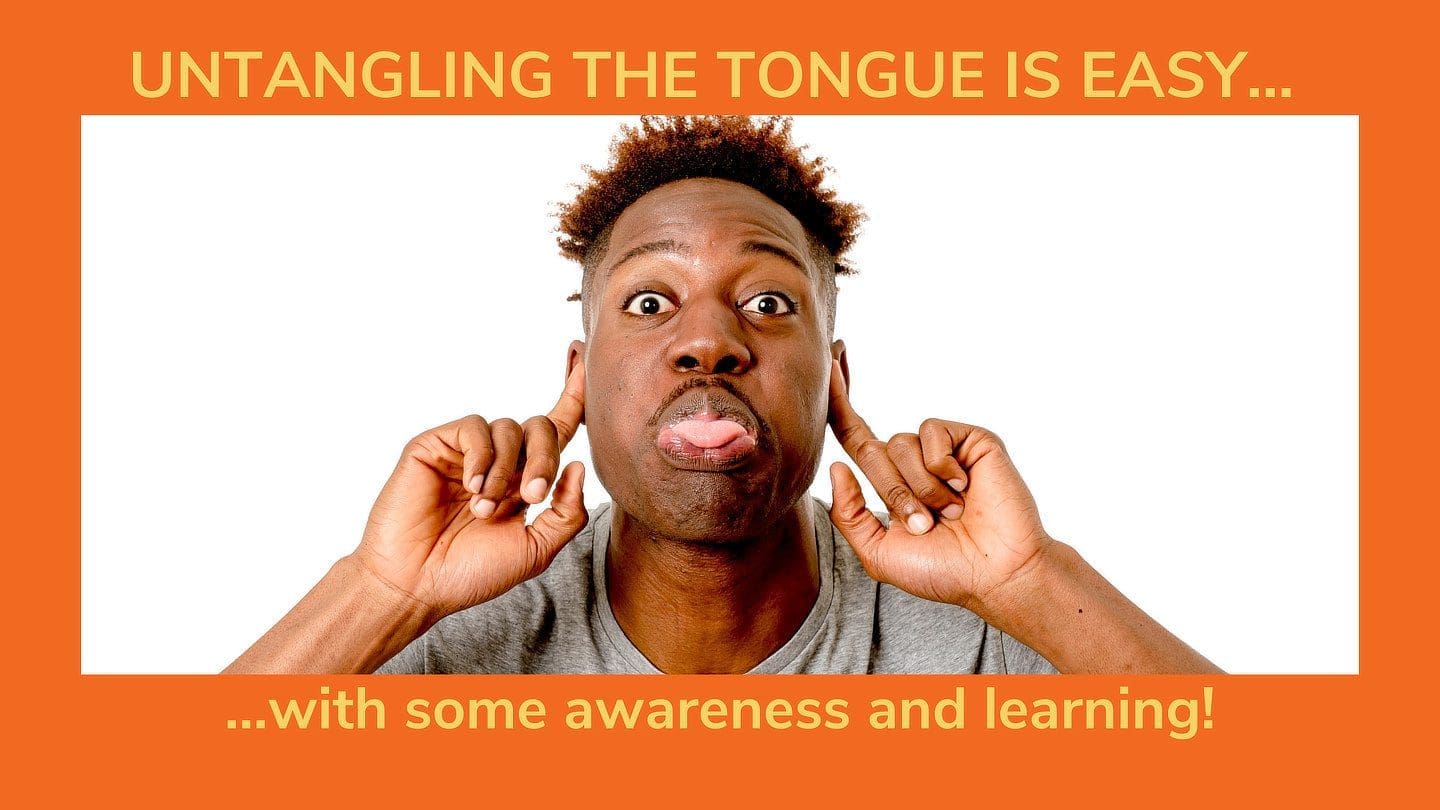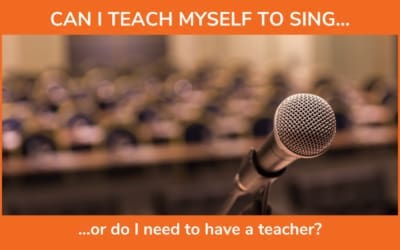The human tongue – at rest and in action – is a complex organ that is part of many vital human systems, including: eating/digestion, respiration, and speech.
It is a relatively large organ – taking up a LOT of space in the mouth/throat area and it has many somatic/neurological connections throughout the body/mind/self. The tongue is connected with our guts, our sexuality, our posture and has many more subtle connections to our emotions and our thinking. It’s MAJOR!
This tongue is also a complex structure of structures with many paired and connected muscles creating its body and securing it to other structures such as the jaw, skull, spine, hyoid bone and sternum. Understanding experientially and untangling these criss-cross connections is key to gaining maximal flexibility, mobility, coordination and integration in our system overall, but especially for easy and free speech and singing.
Here a few interesting things to consider that will transform your understanding, sense and use of your tongue in action:
1. RELEASING THE TONGUE IS ONLY THE BEGINNING
Because the tongue is such a complex organ and has so many connections within, around it, and in our system, we can get “tongue tied” easily.
That is, we can habitually hold the tongue in ways that are less than free, less than restful without even knowing it. We could be habitually holding it back or down, pushing it forward or squeezing it in – for various reasons.
And, if these kinds of patterns are being held in general WHILE we are trying to do something else that might require its opposite, we will experience difficulty or resistance because we are unknowingly enacting one pattern that is competing with another.
Most people call this “tongue tension.” I call it confusion!
So, first we can release the tongue and learn to let it rest in a more neutral state – neither forward or back, in or out. But, that’s just the beginning because we still have to learn how to move it in various coordinated ways while being able to return back to neutral when we’re finished.
If we cannot do this, we are bringing the residue of habits and previous movements to each new movement and it will get more and more difficult to do anything with ease before we COLLAPSE!
Trust me, I know. I used to get “charley horses” under my tongue while singing for long periods – especially if the range of the singing was consistently high! OUCH!
2. COORDINATION WITH AWARENESS IN KEY
Learning to move the tongue in lots of different, simple and complex, ways with awareness is crucial to gaining a sense of ease and precision with the tongue. The tongue: turns, curls, twists, bends, widens, narrows, moves forward (lengthening), moves backward (bunching), raises, lowers… so many things!
Learning to move the tongue in lots of different, simple and complex, ways with awareness is crucial to gaining a sense of ease and precision with the tongue.
Robert Sussuma
And once those are clear and coordinated, GUESS WHAT?!?! We can do variations and combinations of these movements with different parts of the tongue at the same time: the back can raise while the front lengthens; the back can lower while the front lengthens, and vice versa. The possibilities are endless.
But, somehow, somewhen, each of these movement possibilities may be useful for something when swallowing, eating, speaking, singing! And, having access to these possibilities with awareness allows your system to choose the best available configuration to match whatever is needed in a given moment – without confusion, contradiction and/or force.
It’s important to explore these things before and OUTSIDE of the context in which you will or may need them, by the way. Then once they are “in your system” your brain/ nervous system can choose as needed (mainly unconsciously) to be able to meet the demands of your intention and/or the demands of the environment/outside world.
3. THE TONGUE IS ITS CONNECTIONS
It is common for us to think that the various structures in the body are localized and independent, that they function on their own. The jaw is just the jaw, the toes are just the toes, etc.
But, this is an illusion. It is an arbitrary distinction that we make in language and in anatomy books, it isn’t how things are in vivo – in real life! The tongue is ALSO everything it is connected to – locally and globally – because each of those connections influences its function.
So, the tongue is also the jaw – because so many aspects of the tongue are “rooted” in the jaw.
The tongue is also the eyes – because they are neurologically and functionally connected.
The tongue is also the spine – because it functions in relation to the entire spine all the way down to the tailbone (e.g. imagine that you are sitting and trying to lick a cone of ice cream while someone keeps pulling it farther and farther away, without getting out of the chair to follow it what do you do with your spine?

BTW if you got up and walked toward the cone to lick it, wouldn’t that mean your tongue also needs your feet!?!). This is a huge concept and a real paradigm shift when you get it. No “part” is ever just one thing… and this is truly so when it comes to the tongue.
4. THE TONGUE CAN REST IN ACTION
Once all of these confusions and coordinations are cleared up and there is a true, balanced flexibility in the tongue at rest and in action, something even more amazing emerges as a possibility: REST IN ACTION.
This means that even while the tongue is acting in various ways – making different shapes and patterns – slowly or in quick succession – there are aspects of the tongue that are at rest while others are active AND in-between each movement (from movement to movement) we can pass through neutral letting go of any work we just did to do something new WITHOUT bringing along residual work from the previous moments.
It’s a beautiful thing.
We can be precise in our moments and relaxed. We can be relaxed and precise at the same time.
When this happens, vocal movements become easy and free and we have energy in the rest of the system to do other things too – make other movements in the vocal tract, larynx and/or rest of the body to optimize our singing/speaking without the tongue interfering or taking up too much space (physically and mentally).
When one finds this balance, it is often described – by my students – as the feeling that their tongue has disappeared. Of course it’s there and it’s doing what is wanted and needed, but the felt sense is that it just isn’t there any more.
When this happens, it is truly integrated into the whole system in those actions. There is balance, harmony, freedom and ease. Aaaaaah.
This article is one of a series on the topic of the tongue and how it fits in with vocal learning. Read all about it here:
OH THE TONGUE!: THE CENTER OF IT ALL?
LEARN ABOUT THE TONGUE AT REST, AND IN ACTION, IN THE SINGING SELF PROGRAMS
In THE SINGING SELF PROGRAM, there are many classes that explore these possibilities, especially TONGUE AT HEART and SLURP!
Learning to find these coordinates that I’ve described above and bringing them into the action of your speaking and singing is a true functional game-changer – one that you will never find thinking of the tongue in an oversimplified and/or over-complicated way.
It’s you. Your tongue is you. It’s an experience and you can learn to educate your tongue/self in such a way that your potential is truly realized and can keep developing IN your singing, speaking, learning and performing!

THE SINGING SELF PROGRAM – Teacher Track
will blow your mind by not only asking you to question all of your basic assumptions, but give you a framework for making the paradigm shift from a mechanistic view of voice and learning to a truly holistic and unified vision for the endless improvement of the body/mind/voice/self.





0 Comments